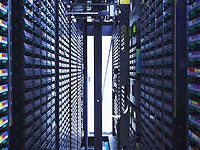 |
Companies concentrating their data center automation efforts on server automation are making a strategic mistake.
Data center automation will be here within five years. Start planning for it now.
That’s the view of Glenn O’Donnell, a senior analyst at Forrester Research. He believes what’s needed is a more holistic view of data center automation.
“It’s misguided to give server automation all your attention,” he said. “You have to look at servers, the network, storage and applications together. The real magic is orchestration.”
But how attainable is a completely automated data center? The ultimate goal for most companies is an environment in which applications are the focus of attention, and changes to an application result in automatic configuration changes to servers, storage and other infrastructure.
“It’s probably not as far away as you might think,” said O’Donnell. “The tricky bit is orchestration, but complete datacenter automation could be with us in as little as five years.”
If that’s the case, it’s important to consider which vendors are going to be the likely winners because this may have a bearing on the hardware choices that we make today.
Despite the steps being made by vendors of storage products into server automation software — for example, EMC’s Server Configuration Manager and Configuration Analytics Manager products — it’s unlikely that single-vendor solutions will be successful, O’Donnell believes.
“It’s likely we’ll see HP deliver server automation, EMC deliver storage automation and Cisco do network configuration. But it’s unlikely HP would be able to do storage automation better than EMC or network automation better than Cisco. That’s why the real magic will be orchestration — making all of these things work together.”
Follow the Leader
|
Unsure About an Acronym or Term? |
Who are the big players then? It’s a market that’s consolidating fast, and many of the “independent” players have disappeared. Once HP bought Opsware, arguably the most important datacenter automation vendor with server, network and storage automation products, in July 2007 for about $1.6 billion, it was only a matter of time before storage automation vendor Onaro and server automation vendor BladeLogic got snapped up. In fact Onaro lasted until January 2008 before being bought out by NetApp for a reported $120 million, while BladeLogic lasted until April 2008, when it was bought by management software vendor BMC for $800 million.
The “Big 4,” according to O’Donnell are HP (with Opsware), IBM, BMC (with BladeLogic) and CA. But behind them are plenty of other would-be market participants.
Perhaps the most obvious of these is VMware, which is majority owned by EMC. It has always been very active in the management software arena, most notably with its Infrastructure 3 product for virtualized environments and its Datacenter OS. “VMware is undeniably a player, usually by acquisition,” O’Donnell said. And since server virtualization is becoming increasingly important, any datacenter automation solution that comes from a virtualization vendor is bound to be viewed positively.
Microsoft can’t be counted out for the same reason. Clearly its Hyper-V technology is not yet as sophisticated as VMware’s virtualization technology, and its virtualization management software is not as advanced as VMware’s, but Microsoft’s System Center product, which includes a virtual machine management module, would seem like a solid base on which to build an automation system. And since Microsoft makes many corporate applications and the servers that run on them, it would seem ideally suited to understanding the infrastructure requirements of applications in general. And its partnership with Novell (NASDAQ: NOVL) means that it’s gaining knowledge of Linux environments very quickly.
“There is no doubt that Microsoft is in a unique position to play a major role in orchestration,” said O’Donnell. “They are gaining traction, but they are undeniably behind at the moment.”
Other potential market participants include Oracle, SAP and Symantec, which owns the Veritas storage software line and is making its own strides in automation.
“Symantec seems to be stepping back into the market place, but there does seem to be a lack of commitment there,” said O’Donnell. “They should be a player in this market, but do they really want to be?”
A lesson from the Industrial Revolution
The reason so many diverse companies want to get involved is that the rewards are potentially huge. Although it is hard to define exactly where the boundaries are, O’Donnell believes it’s a multi-billion dollar business. “It is very fast-growing, and one of the hottest to be in right now,” he said.
You might imagine that the economic slowdown would have a negative effect on this market, but in fact the reverse is true, O’Donnell said. “We’ve not seen a cutback in spending yet — in fact, we have seen an uptick in investment. The challenge is to do more with less when times are tough, and automation is a very effective way to achieve this.”
Whatever the economic climate, advances in datacenter automation seem inevitable. In the industrial sector during the industrial revolution, automation was the key to huge gains in efficiency. The same is bound to be true in the IT sector.
“In five years time, people will say ‘can you believe that people used to telnet in to a router to configure it by hand?'” O’Donnell said. “Everything will be automated.”
This article was originally published on Enterprise Storage Forum.


